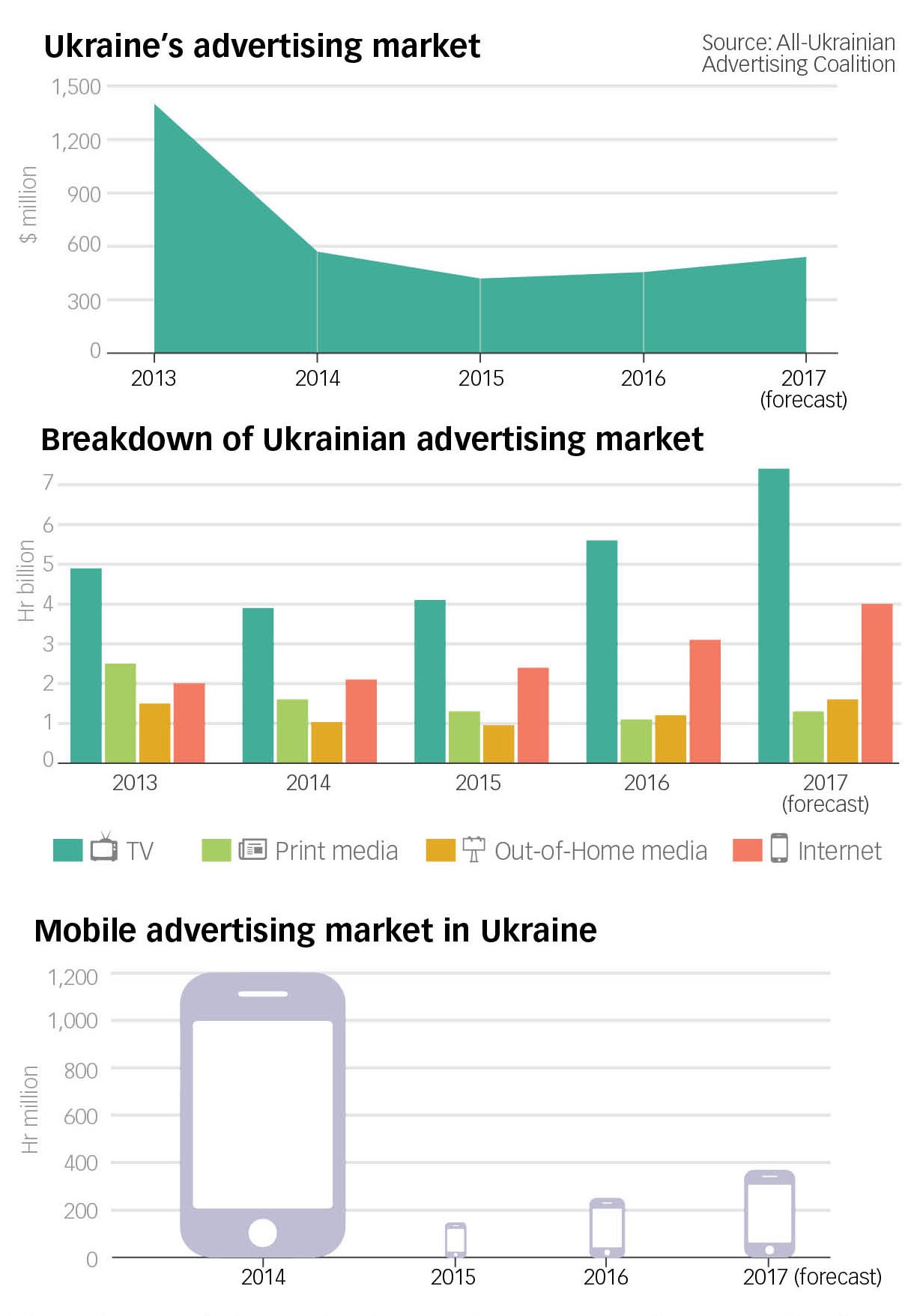Ukraine’s advertising market has entered new year with a bit more spring in its step. While Russia’s war and economic uncertainty continue to take their toll, recovery began in 2016.
According to Maksym Lazebnyk, the executive director of the All-Ukrainian Advertising Coalition, advertisers spent $455 million (Hr 11.6 billion) in 2016, compared to $419 million the year before.
He expects this year’s market to reach Hr 14.8 billion, or $540 million as long as the currency remains stable.
Ukraine’s advertising market used to be worth $1 billion before Russia annexed Crimea and started the war in the Donbas in 2014. Ukraine’s national currency has lost more than two-thirds of its value since then.
Vitaliy Georgiev, strategy consultant at Aimbulance strategic marketing agency and a moderator at Ukrainian Digital Agencies Committee, says that the advertising industry is “very sensitive” to political and economic instability.
“This is a downside… On the other hand, there is hardly any other business that can recover so quickly,” Georgiev told the Kyiv Post.
The blossoming of digital communications provides a fresh source of revenues. Online advertising will remain a key factor, market experts say. In 2016, digital advertising accounted for a significant chunk – more than a quarter – of Ukraine’s advertising pie.
In its latest forecast, the All-Ukrainian Advertising Coalition expects nearly 30 percent growth in internet advertising, which is set to rise from Hr 3 billion or $79 million to almost Hr 4 billion or $108 million in 2017.
The main drivers of growth in 2016 were mobile ads, paid search (advertising in the sponsored listings of a search engine) and digital video. Experts say this trend will likely continue.
The figures also suggest that TV ads, as well as public media (billboards, street and road signs, etc.), will likely boost their share, as these segments went down during the EuroMaidan Revolution and the war that followed.
Such media advertising should take about 10 percent or Hr 1.6 billion ($43.2 million), while Hr 7.4 billion ($199.8 million) will go to television channels – an increase of 30 percent compared to 2016.
Print media is also expected to grow slightly next year, increasing its share of the market from the current Hr 1.1 billion ($28 million) to Hr 1.3 billion ($35.1 million), or 17 percent.
Upcoming spring events, including the World Hockey Championship Division I Group A matches, and the Eurovision Song Contest in May, will likely help the domestic advertising market.
Tetiana Gusak, a client service director at Momentum, a network brand experience agency, says that outdoor advertising in Ukraine looks like a “garbage bin” because it is often poorly integrated into cities’ architecture. She says that brands should creatively come up with advertisements that “stimulate positive emotions.”
Kyiv City Council is working on a plan for the city that will help outdoor ads to blend in with urban surroundings.
As for new trends, experts say that 2017 is going to mark a turning point in the way audiences consume video content.
“Users are accustomed to consuming video content in the gigabytes, and this leads to the fact that there are difficulties with the traditional text content consumption,” Georgiev says, adding this trend is going to inspire marketers to produce more square-shaped videos that fill the full space of a social media newsfeed when viewed on a mobile device.
He said that this would likely to pay off, as such video clips are more likely to be viewed to the end.
According to U.S.-based Laundry Service, a social media agency, view rates for square videos are 28 percent higher than for horizontal content. That offers more opportunities for advertisers, including more interactive formats, and encourages them to prioritize mobile content over more traditional advertising forms.

